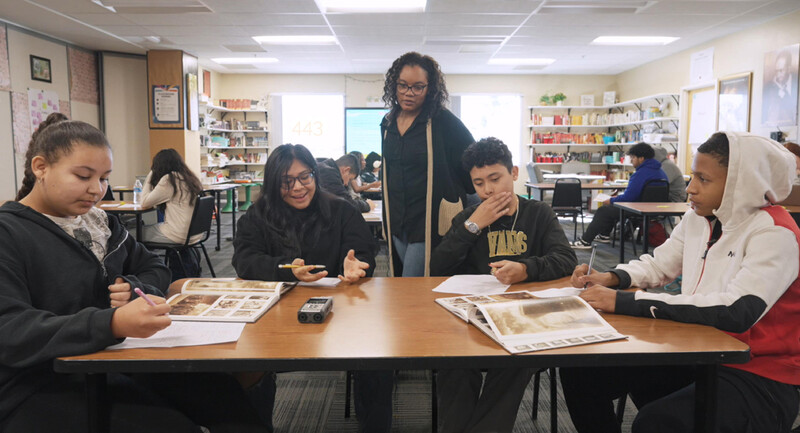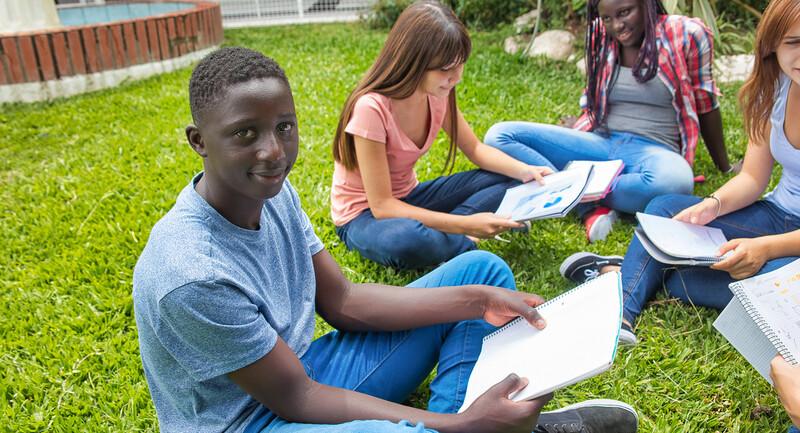What is “genuine understanding,” and how can 6- or 7-year-olds demonstrate it? At The New City School, our 1st grade team explored this question after reading The Unschooled Mind (Gardner 1991).
We defined genuine understanding as using information in novel ways. Ultimately, we wanted 52 students to assume responsibility for their learning while having many opportunities to reflect on the experience. We also wanted them to interact with the community. Finally, because The New City School implements Howard Gardner's theory of multiple intelligences, we wanted the children to use their many talents. A community-based research project seemed the likely answer.
Using Clipboards and Rating Sheets
In searching for a project to complete our six-week study of plants, again we turned to Gardner, a proponent of child-centered museums. We introduced our idea for a plant museum to the students with a question, “What makes a good museum?”
After naming museums in the St. Louis area, the children gathered in small groups to chart what they liked about them. Then, as a class, they voted on the most important ideas. In this way, our students developed their own criteria for what would become the 1st Grade Plant Museum. That evening, using the children's input, we created a Likert Rating Scale—with smiling and frowning faces at opposite ends.
The next step was to see how the local museums measured up to the scale. Armed with clipboards and rating sheets, the children set off for the St. Louis Museum of Art, Science Center, and the St. Louis Zoo's Living World. The students rated their experiences on the appearance of the displays, the extent to which visitors could interact with them, and their own interest in the performances and presentations. Back at school, they organized the data into graphs, which showed how each museum rated against their criteria.
Blending the Content Areas
Enthusiasm for the museum grew as our students became immersed in the plant curriculum. The unit—organized into a study of plants as habitats and as food—was designed to integrate all of the content areas.
For example, in literature groups children read fictional books like Barbara Cooney's Miss Rumphius (1982), a story in which a woman sows seeds to make the world a more beautiful place. They also consulted reference books like Flowers, Trees, and Other Plants (Stidworthy 1991). During Writers Workshop, children wrote poetry and stories about plants and created their own reference books.
To integrate math, we asked the children to write story problems about plants and to create flower patterns. Using the scientific method, they conducted long-range experiments in which they hypothesized, observed, collected, measured, and graphed data. For example, children witnessed the 35-day life cycle of Wisconsin Fast Plants™, giving them firsthand experience with germination, plant growth, pollination, and seed formation. In other experiments, students developed criteria for germinating corn, beans, and grass. On a visit to the Missouri Botanical Garden, the children recorded comparisons between rainforest and desert habitats in field guides that we had created for them. Then, before leaving, they rated the museum using their Likert Scale.
A classroom visit from a local landscape architect provided yet another opportunity to interact with the community. During a slide show, children learned about the prairie habitats, soon to become part of their new school playground.
Designing Interactive Exhibits
To prompt children into thinking about possible museum exhibits, we challenged them to brainstorm ways in which they could share what they had been learning. Shivers ran up our spines as children called out ideas. Their suggestions reinforced the belief that this museum needed to be hands on.
- displays in which visitors could use their bodily-kinesthetic intelligence by walking through a maze to learn about habitats, or by assembling a giant puzzle on the floor to learn about farming around the world;
- an exhibit in which participants could use their linguistic and intrapersonal intelligences to author a page for a book the students entitled, If I Were a Plant I'd be the Part Called...;
- pattern blocks that lured visitors into using their spatial-artistic intelligence to design and color gardens;
- videotaped dances and musical numbers that interpreted the life cycle of plants in their natural habitats; and
- mathematical challenges, including an estimation game entitled “How Many Seeds Are in the Bags?” and a “garden” of story problems in which visitors lifted flaps to reveal answers.
These were just a just a few of the 26 different museum attractions. Of course, visitors also had many opportunities to use their interpersonal intelligence in the museum's numerous cooperative activities.
Demonstrating Genuine Understanding
To our surprise, the children were able to demonstrate a genuine understanding of multiple intelligences. Not only did they use their knowledge of the various intelligences in the creative process, but they consciously made exhibits that compelled visitors to use their multiple intelligences as well.
Many more surprises were in store for us. One morning, Alex brought in stationery made on his home computer and proposed that the students open a gift shop. The children were instantly sold on the idea! After we introduced them to market research, our students brainstormed ideas for items to make—from mazes and games to machine-operated singing flower gardens. Next they surveyed teachers and other students about items they would buy and how much they would be willing to pay for them.
In math class, students made pricing posters and practiced making change. Then they busily began creating paintings, mazes, games, puzzles, notecards, and other cost-effective novelties for their gift shop. On the last day of school, their faces beamed as they presented proceeds totaling nearly $50 to a board member to help pay for the new playground. (They had decided to raise money for the prairie they had learned about earlier.)
In addition to extending students' learning in new ways, creating the plant museum helped strengthen the home/school connection. As weekly homework, the children conducted independent research. One activity asked them to author a plant “fast fact” by asking a question, researching its answer, and recording the source of the information. Students and parents found these activities to be challenging and fun. For example, Bianca, a student who typically did not complete her homework, researched a question of interest to her, “What is rubber used for?” Her answer included a three-dimensional display of rubberbands, erasers, and other assorted items.
Becoming More Independent Learners
Ongoing evaluation became a key part of our study. The children used a variety of rating sheets and questionnaires to recognize what they had done well and what they could improve, examining their intrapersonal intelligence (what they knew about themselves) and their interpersonal intelligence (how they worked with other people).
In the process of examining the roles they assumed within groups, several children who typically were followers reflected about how they might become leaders. In exploring different points of view, students were challenged to be open-minded while defending their positions. Some noted that they needed to listen more while others talked. Tinisha's comment to the class summed up the measure of their success using their personal intelligences: “When we have something important to do that we all want to work on, we don't waste time by arguing. We get along and get it done.”
Through self-assessment and goal-setting, students also strengthened their critical and creative thinking skills. For example, over time, the students showed that they had internalized the concept of self-regulation by initiating their own projects and creating time lines for their work. While adhering to their schedules, the children also demonstrated an attention to accuracy by seeking information from a variety of sources, including dictionaries, reference books, and one another. Using their own standards of evaluation, they determined when their projects were ready to display. In short, they constantly pushed themselves to do their best—even in the face of frustration.
Awaiting Opening Day
The final step was to set up the museum. Children spent an afternoon moving tables, arranging the gift shop, assembling displays, and posting signs. The school was abuzz with news of the coming museum.
On opening day, the children pinned on name badges and took their places. They had applied for jobs and were grouped into work crews of 10, each with at least two shifts in the museum. Their advertising—in the form of fliers, posters, and postcards—drew in people of all ages, ranging from kindergartners to grandparents. The museum bustled with activity!
As visitors approached the museum, a greeter welcomed them with a gallery guide written by the exhibitors to interpret their displays. Inside the museum, docents gave tours, security guards watched the exhibits and answered questions, gift shop clerks collected money and made change, and curators made sure that everything ran smoothly. For example, one day Timothy, a curator, noticed that the gift shop was about to run out of plants. Several minutes later he was found in the classroom next door, quietly gathering milk cartons, filling them with soil, and planting cuttings for the museum. He knew how to solve the problem and took the initiative to do so.
As you can see, the 1st Grade Plant Museum was a tremendous success. The students exhibited genuine understanding of multiple intelligences and of the museum as a means of communication. On her final evaluation, Amy succinctly stated what every museum visitor felt: “Our plant museum was best because we made it for the kids.” Who knows? Maybe someday you will run into one of our students at another great museum!







